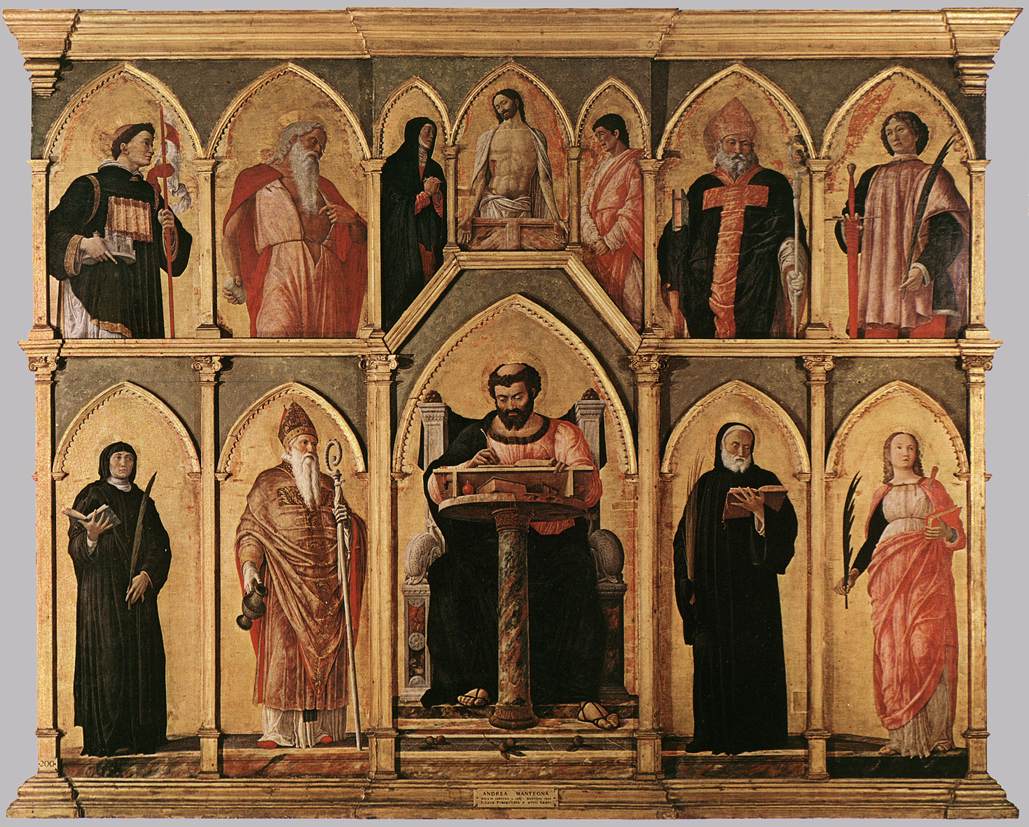- San Luca Altarpiece
Infobox Painting|

title=San Luca Altarpiece
artist=Andrea Mantegna
year=1453
type=Panel
height=177
width=230
city=Milan
museum=Pinacoteca di BreraThe "San Luca Altarpiece" is a series of painting by the Italian
Renaissance painterAndrea Mantegna , who finished it in 1453. It is housed in thePinacoteca di Brera ofMilan .The work (12 panels) was commissioned in 1453, when the artist was twenty-two years old, for the chapel of S. Luca in the church of S. Giustina,
Padua . The figures represented, reading from upper left, are:St. Daniel of Padua ,St. Jerome , theVirgin Mary ,Christ ,St. John the Apostle ,St. Augustine of Hippo ,St. Sebastian ,St. Scolastica ,St. Prosdocimus ,St. Benedict and St. Justina.The original wooden frame in which Mantegna's signature had been incised was destroyed by lightning in the 17th century. Its loss radically alters the composition, as can be seen by the considerable difference in scale between the two registers. It is thus worth attempting a reconstruction, in order to grasp the meaning of the whole work.Probably commissioned by the donors to execute a Gothic-type altarpiece, Mantegna must have succeeded in altering the scheme substantially by inserting a thick molding between the two orders. This division set the two ranges much farther apart than they are today. Another device used by the artist to avoid the effect of caged images is the perspective in the centre of the composition whereby the upper panels were made smaller to suggest distance while the lower panels were made larger to imply that they are closer to the spectator. But the most sensational means is the stepped pavement, which must have been the ground plane of the suggested architectural construction. The whole must have made a sort of two-storied loggia, housing figures engaged in a
Sacra Conversazione .Even without its original framework, the separate figures remain highly impressive. A lyric quality, unequalled in Mantegna's other work, is generated by the illusionistic effect of the figures, achieved by means of their "wet drapery", which Mantegna must have rediscovered by studying classic Roman sculpture.
Wikimedia Foundation. 2010.
